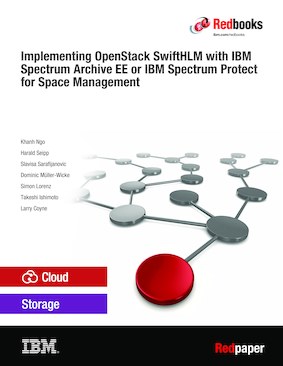
Published on 07 June 2017, updated 27 June 2017
Read in Google Books
Share this page:
ISBN-10: 0738456098
ISBN-13: 9780738456096
IBM Form #: REDP-5430-00
Authors: Khanh Ngo, Harald Seipp, Slavisa Sarafijanovic, Dominic Mller-Wicke, Simon Lorenz, Takeshi Ishimoto and Larry Coyne
Abstract
The Swift High Latency Media project seeks to create a high-latency storage back end that makes it easier for users to perform bulk operations of data tiering within a Swift data ring.
In today’s world, data is produced at significantly higher rates than a decade ago. The storage and data management solutions of the past can no longer keep up with the data demands of today. The policies and structures that decide and execute how that data is used, discarded, or retained determines how efficiently the data is used. The need for intelligent data management and storage is more critical now than ever before.
Traditional management approaches hide cost-effective, high-latency media (HLM) storage, such as tape or optical disk archive back ends, underneath a traditional file system. The lack of HLM-aware file system interfaces and software makes it difficult for users to understand and control data access on HLM storage. Coupled with data-access latency, this lack of understanding results in slow responses and potential time-outs that affect the user experience.
The Swift HLM project addresses this challenge. Running OpenStack Swift on top of HLM storage allows you to cheaply store and efficiently access large amounts of infrequently used object data. Data that is stored on tape storage can be easily adopted to an Object Storage data interface.
This IBM® Redpaper™ publication describes the Swift High Latency Media project and provides guidance for installation and configuration.